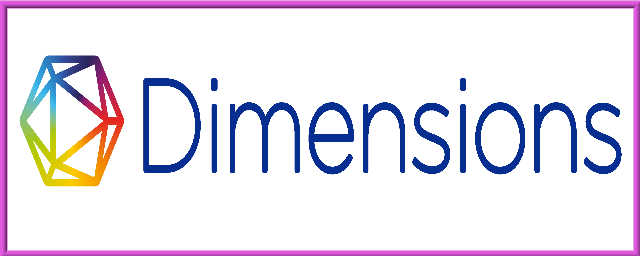Kemampuan Bercerita Anak Prasekolah (5-6 tahun)
(1) Universitas Negeri Yogyakarta
(2) Universitas Negeri Yogyakarta
(*) Corresponding Author
DOI: https://doi.org/10.26858/pembelajar.v2i2.6362
Abstract
Abstract: The purpose of this study is to know the knowledge about the language development of preschoolers, especially in the ability to storytelling. The study involved 60 children consisting of 32 boys and 28 girls ranging in age from 5-6 years and there were 4 teachers. The method used is experiment with pretest-postest control group design. Qualitative descriptive data were obtained from teacher interviews. Quantitative data obtained from the observation sheet of storytelling ability. Children do story-telling activities using a wordless picture book for the experimental group and a picture book with text for the control group. This research reveals that with a wordless picture book is more effective to improve the ability to tell the story of preschoolers than the story books in general. Children are more adept at choice of words and gestures through the images they see.
Keywords
Full Text:
PDFReferences
DAFTAR PUSTAKA
Carr, M., and W. Lee. (2012). Learning stories: constructing learner identities in Early Education. London: Sage.
Dickinson, D. K., Griffith, J. A., Michnick, R., & Hirsh-Pasek, K. (2012). How reading books fosters language development around the world. Child Development Research, 2012 http://dx.doi.org/10.1155/2012/602807.
Greenhoot, A., & Semb, P. A. (2008). Do illustrations enhance preschoolers’ memories for stories? Age-related change in the picture facilitation effect. Journal of Experimental Child Psychology, 99(4), 271–287.20Stories.pdf
Hibbin, R. (2016). The psychosocial benefits of oral storytelling in school: developing identity and empathy through narrative, Pastoral Care in Education, 34:4, 218-231, DOI: 10.1080/02643944.2016.1225315
Huck, C. S., Hepler, S., & Hickman, J. (1987). Children’s literature in the elementary school. New York: Holt, Rinehart and Winston.
Isbell, R., T. (2002). Telling and retelling stories learning language and literacy. East Tennessee State University in Johnson City.
Isbell, R., Sobol, J., Lindauer, L., & Lowrance, A. (2004). The effects of storytelling and story reading on the oral language complexity and story comprehension of young children. East Tennessee State University. Early Childhood Education Journal, Vol. 32, No. 3.
Lenox, M. F. (2002). Storytelling for young children in a multicultural world. Early Childhood Education Journal, Vol. 28, No 2, DOI 1082-3301/00/1200-0097$18.00/0
Lysaker, J & Hopper, E. (2015). A Kindergarten’s Emergent Strategy Use During Wordless Picture Book Reading. International Literacy Asaction.
Lysaker, J. T., & Alicea, Z. A. (2016). Theorizing Fiction Reading Engagement During Wordless Book Reading. Elsevier Journal, Linguistic and Education, http://dx.doi.org/10.1016/j.linged.2016.11.001
Lysaker, Judith & Sedberry, Tiffany. (2015). Reading difference: picture book retellings as contexts for exploring personal meanings of race and culture. Literacy UKLA.
Lassley, E. A., Lory, E., & Haas, L. E. (2017). Visual Literacy, Academic Standards, and Critical Thinking: Using Wordless Picture Books as an Instructional Tool. The California Reader. Vol. 50, No. 2
Lysaker, J. T. (2006). Young Children’s Reading of Wordless Picture Books: What’s Self Got to Do Whit it?. Sage Publication: Journal of early Childhood Literacy.
Lysaker, J. T., & Miller, A. (2013). Engaging social imagination: The developmental work of wordless book reading. Journal of Early Childhood Literacy 13(2) 147–174. DOI: 10.1177/1468798411430425
Lukens, Rebbeca, J. (2003). A critical handbook of children’s literature-6th ed. Wasley Educational, Publisher Inc. New York: Longman.
Lassley, E. A., Lory, E., & Haas, L. E. (2017). Visual literacy, academic standards, and critical thinking: using wordless picture books as an instructional tool. The California Reader. Vol. 50, No. 2
Lysaker, J. T. (2006). Young children’s reading of wordless picture books: what’s self got to do whit it?. Sage Publication: Journal of early Childhood Literacy.
Mitchell, D. (2003). Children’s literature an invitation to thre world. Boston: Ablongman.
Roux, A. L. (2015). The production and use of wordless picture books in parent-child reading: an exploratory study within a south African context. Vega school of brand leadership, south Africa.
Ramos, A. M., & Ramos, R. (2011). Ecoliteracy Through Imagery: A Close Reading of Two Wordless Picture Books. Children’s Literature in Education, 325–339, DOI 10.1007/s10583-011-9142-3
Southcott, L. H. (2015). “Learning stories: connecting parents, celebrating success, and valuing children’s theories.” Voices of Practitioners 34. Accessed November 6, 2015 https://www.naeyc.org/files/naeyc/Southcott.Learning%
Sitepu, B. P. (2015). Penulisan Buku Teks Pelajaran. Bandung: Remaja Rosdakarya.
Torr, Jane. (2004). Talking about picture books: The influence of maternal education on four-year-old children’s talk with mothers and pre-school teachers. Macquarie University, Australia. Journal of Early Childhood Literacy, vol. 4(2) 181–210 DOI: 10.1177/1468798404044515
Tower, C. (2002). It’s a snake, you guys!: ‘The power of text characteristics on children’s responses to information books’. Research in the Teaching of English, 37(1), 55–88
Wright, C., Bacigalupa, C., Black, T., & Burton, M. (2007). Windows into children’s thinking: a guide to storytelling and dramatization. Early Childhood Educ J 35:363–369 DOI 10.1007/s10643-007-0189-0
Xinyu Yu. (2012). Exploring visual perception and children's interpretations of picture books. Library & Information Science Research. doi:10.1016/j.lisr.2012.06.004
Zadra, C. 2017. “Wordless picture books beyond school boundaries: visual bridges toward family-school partnerships in education” proceedings at the international and interdisciplinary conference immagini? image and imagination between representation, communication, education and psychology, 1, 941. www.mdpi.com/journal/proceedings
Zhang, Q. (2016). Do learning stories tell the whole story of children’s learning? A phenomenographic enquiry. Early Years: Taylor & Francis e-Library. http://dx.doi.org/10.1080/09575146.2016.1151403
Article Metrics
Abstract view : 363 times | PDF view : 60 timesRefbacks
- There are currently no refbacks.
Copyright (c) 2018 Revina Rizqiyani, Nur Azizah

This work is licensed under a Creative Commons Attribution-NonCommercial-NoDerivatives 4.0 International License.
Diterbitkan Oleh
Fakultas Ilmu Pendidikan Universitas Negeri Makassar
Kampus IV UNM Tidung, Gedung HP 101 Fakultas Ilmu Pendidikan. Jalan Tamalate I Tidung Makassar
Email : pembelajar@unm.ac.id
Contak HP: 085299149118 / 081342252446
Pembelajar terindex oleh:
![]()
Pembelajar is licensed under an Attribution-NonCommercial 4.0 International (CC BY-NC 4.0)










